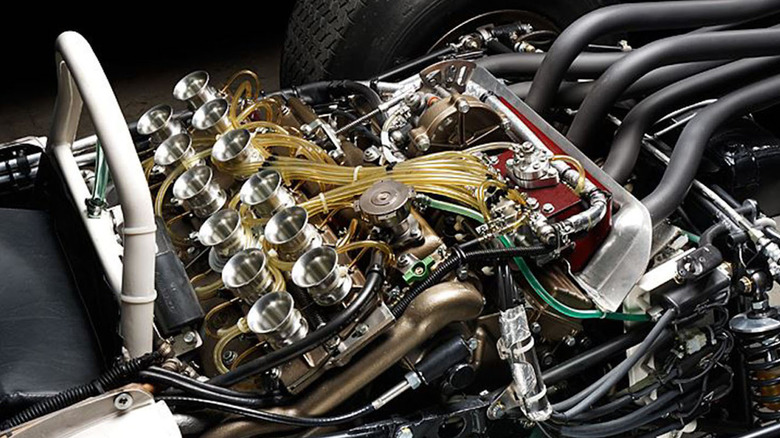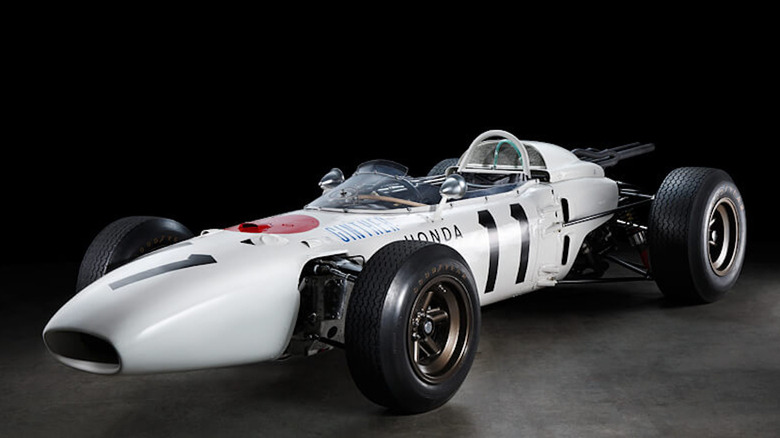How Honda's Tiny V12 Became One Of The Most Iconic Engines In F1 History
Honda, led by founder Soichiro Honda, began as a motorized bicycle manufacturer, later expanding into the production of motorcycles. In 1961, Honda was at the top of its motorcycle game, winning both classes in the 1961 Isle of Man TT race, while also winning the World Championships.
Honda had ambitions to become a major automotive player, so it started at the top in Formula 1. Honda's tiny 1.5-liter V12 F1 engine, known as RA271, first appeared at the 1964 German Grand Prix, driven by Ronnie Bucknum. This was a year after Honda produced its first four-wheeled vehicle, the T360. The 1964 F1 season was not successful for Honda, as the car failed to finish two out of the three races it entered.
The 1965 F1 season saw Honda committing to a two-car team (adding driver Richie Ginther) and participating in eight of the season's 10 races. The engine, now called RA272, was upgraded from the 1964 spec. Both lighter and more powerful, it still emitted a piercing shriek. But the 1965 season was mostly unsuccessful, with Honda unable to score any higher than sixth place. Then came the last race of the season, the Mexican Grand Prix. Ginther, after falling behind at the start, shot ahead of everyone and never gave up the lead, scoring the 1.5-liter Honda V12's first — and only — victory. Honda was the first Japanese brand to win in Formula 1. It would achieve one more win before leaving Formula 1 after the 1968 season, one of several times that Honda quit F1 racing.
What else should you know about Honda's tiny V12 engine?
The Honda V12 engine was based on the 250cc two-cylinder engine used in its racing motorcycle, the CR72. The F1 V12 engine was equivalent to six of these two-cylinder engines, displacing a total of 1.5 liters, the Formula 1 limit at the time. In addition to being the only V12 engine in the series, the Honda F1 engine was compact enough to be transversely mounted in the car. Producing 230 horsepower at 11,500 RPM, the RA271 boasted four valves per cylinder, a roller-bearing crankshaft, and used fuel injectors developed by Honda, showing one of the ways in which racing changed the way car engines are made. A six-speed manual transmission sent the power to the rear wheels.
To commemorate the 60th anniversary of the 1.5-liter V12-powered F1 car's first race entry in 1964, Honda brought the 1965 Mexico Grand Prix-winning car to the 2024 Rolex Monterey Motorsports Reunion at WeatherTech Raceway Laguna Seca. This landmark F1 car from Honda marked the beginning of the company's winning ways in Formula 1, with Honda engines providing the power that clinched nine drivers' titles, eight constructors' titles, 139 race wins, 126 pole positions, and 102 fastest laps. From 1986 through 1991, Honda engines would power all of the Constructors' Championship winners in F1. Current F1 teams supported by Honda include Red Bull and Alpha Tauri.

